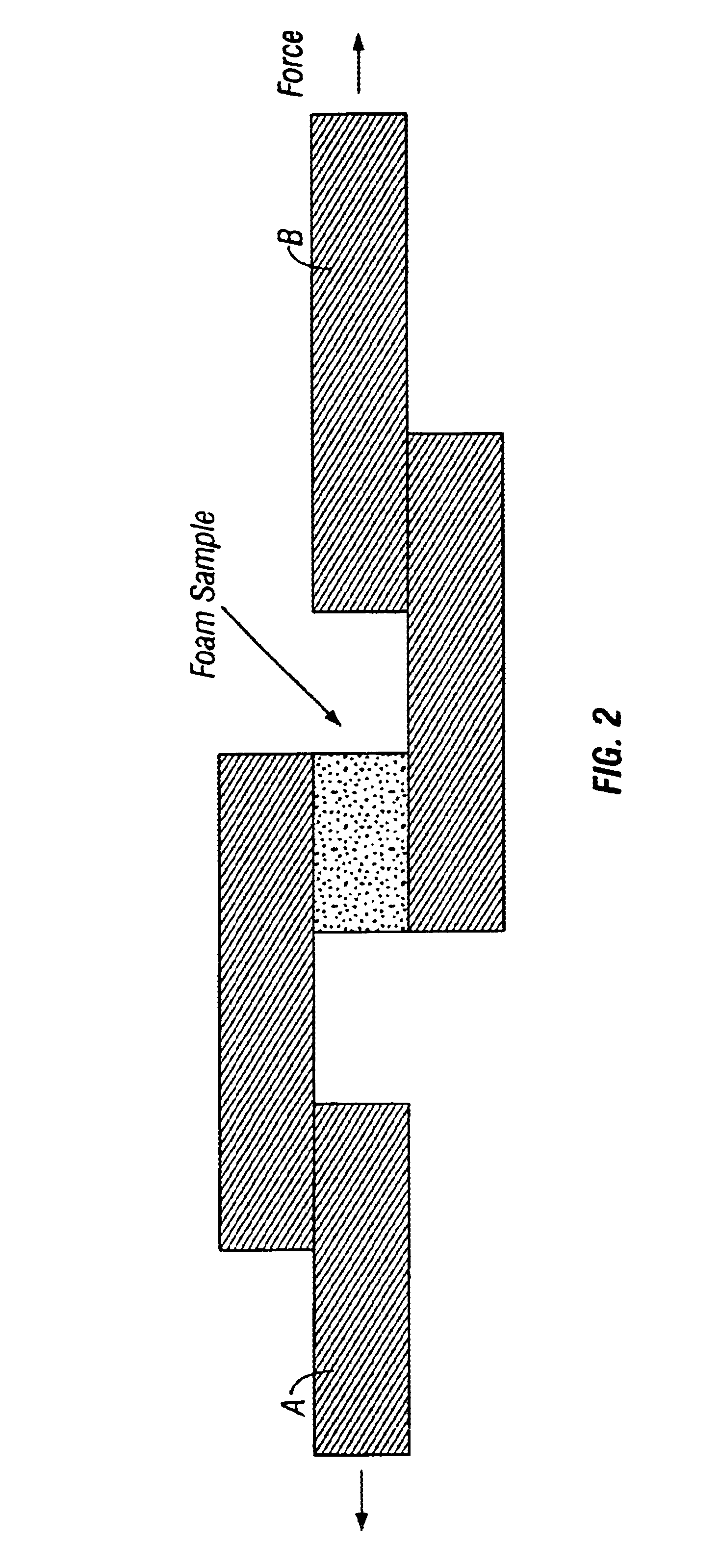Composite foam made from polymer microspheres reinforced with long fibers
a technology of polymer microspheres and composite foams, applied in the field of fiber-reinforced foams, can solve the problems of reducing the density of syntactic foams, affecting the strength of composite foams, and reducing the strength of epoxy-based syntactic foams, so as to improve the strength and modulus of composite foams, improve the strength and modulus of shear strength and modulus, and improve the effect of strain energy density and damage toleran
- Summary
- Abstract
- Description
- Claims
- Application Information
AI Technical Summary
Benefits of technology
Problems solved by technology
Method used
Image
Examples
example 1
Polyvinyl Chloride (PVC)-Fiber Composites
A non-woven aramid fiber webbing was selected for the preform. This product (supplied by Tex Tech Industries, Inc.) is produced via a dry laid carding process without needle punching. A brief description of the webbing structure is given here, and details of the carding process are provided by the manufacturer. The product is a unidirectional, light weight webbing sheet that is subsequently stacked to produce a permeable fiber preform with loft. Layers can also be cross-lapped to form bi-directional webbing.
The webbing used was comprised of chopped aramid fibers (Kevlar® 29), 75 mm long. FIG. 1 illustrates the fiber arrangement of the unidirectional webbing. The webbing pre-form has a layered structure. Fibers extend primarily in one direction (X), although there is some waviness within the layers. A degree of fiber crossover between layers holds the preform together. Most of the composite foam samples were reinforced with this unidirectional...
example 2
Polyacrylonitrile (PAN)-Fiber Composites
Several types of fiber preforms were selected for evaluation. The preforms consisted of random, 3D arrangements of fibers, much like wool or cotton. Composite foams were synthesized using 30 wt % polyester fibers, 8 wt % aramid fibers, and 8 wt % glass fibers. Unreinforced foam was also synthesized and tested for comparison. The polyester fiber preform (commercially available as “NU-Foam”) consisted of fibers with an average length of ˜50 mm. Aramid and glass preforms were fabricated from Kevlar® 49 and E-glass fibers, respectively (with average lengths ˜100 mm). Properties of the fibers are shown in Table 6.
TABLE 6Properties of reinforcing fibersTensileTensileDensitymodulusstrengthg / cm3GPaGPaKevlar ® 491.441313.8E - Glass2.55723.5Polyester1.385.10.32
Expandable microspheres based on thermoplastic polyacrylonitrile (PAN) were obtained from Expancel, Inc. and were used for preparation of the basic foam material. Each hollow microsphere consisted...
PUM
| Property | Measurement | Unit |
|---|---|---|
| Percent by mass | aaaaa | aaaaa |
| Percent by mass | aaaaa | aaaaa |
| Fraction | aaaaa | aaaaa |
Abstract
Description
Claims
Application Information
 Login to View More
Login to View More - R&D
- Intellectual Property
- Life Sciences
- Materials
- Tech Scout
- Unparalleled Data Quality
- Higher Quality Content
- 60% Fewer Hallucinations
Browse by: Latest US Patents, China's latest patents, Technical Efficacy Thesaurus, Application Domain, Technology Topic, Popular Technical Reports.
© 2025 PatSnap. All rights reserved.Legal|Privacy policy|Modern Slavery Act Transparency Statement|Sitemap|About US| Contact US: help@patsnap.com



